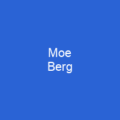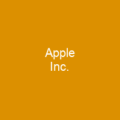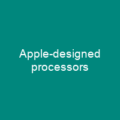NeXT, Inc. was an American computer and software company founded in 1985 by Apple Computer co-founder Steve Jobs. The company developed and manufactured a series of computer workstations intended for the higher education and business markets. NeXT introduced the first NeXT Computer in 1988, and the smaller NeXTstation in 1990. Apple purchased NeXT in 1997 for USD 429 million and 1. 5 million shares of Apple stock.
About NeXT in brief

It remains a prominent early example of a Web server based on dynamic page generation rather than on static content. It also developed WebObjects, one of the first enterprise web application frameworks, which is still used today by some of the world’s largest companies. The Apple University Consortium, which allowed students and institutions to buy the computers at a discount, had earned more than USD 50 million on computers by February 1984. Jobs visited university departments and faculty members to sell Macintosh. He met Paul Berg at a luncheon held in Silicon Valley to honor François Mitterrand, then President of France. Berg suggested that Jobs should use his influence at Apple to create for higher education a \”3M computer\”, a term for a workstation with one megabyte of random-access memory, a one-megapixel display, and one megaFLOPS of CPU performance. Jobs was intrigued by Berg’s concept of a work station and contemplated starting a higher education computer company in late 1985, amid increasing turmoil at Apple. Later that year, Jobs began a power struggle to regain control of the company. He told the board that he was leaving Apple to set up a new computer company, and that he would take several employees from the SuperMicro division with him. He also told them that he might even consider licensing its designs back to them to market under the Apple brand. After several months of being sidelined, Jobs resigned from Apple on September 13, 1985 He told them he would not compete with the Macintosh.
You want to know more about NeXT?
This page is based on the article NeXT published in Wikipedia (as of Dec. 03, 2020) and was automatically summarized using artificial intelligence.







